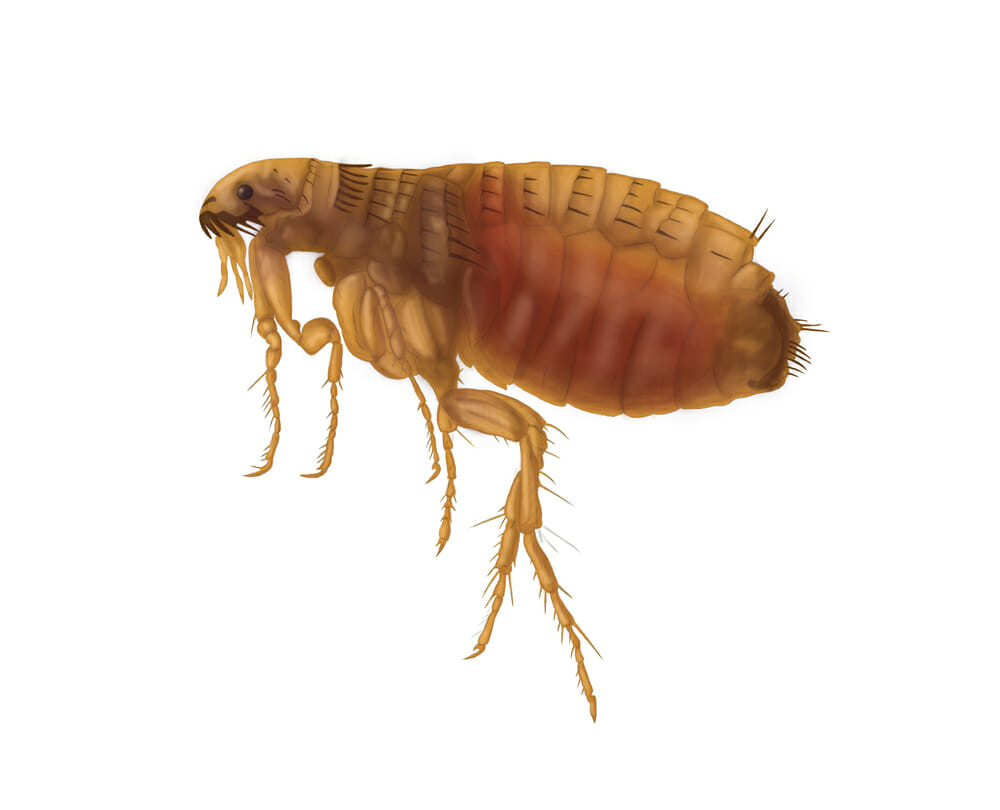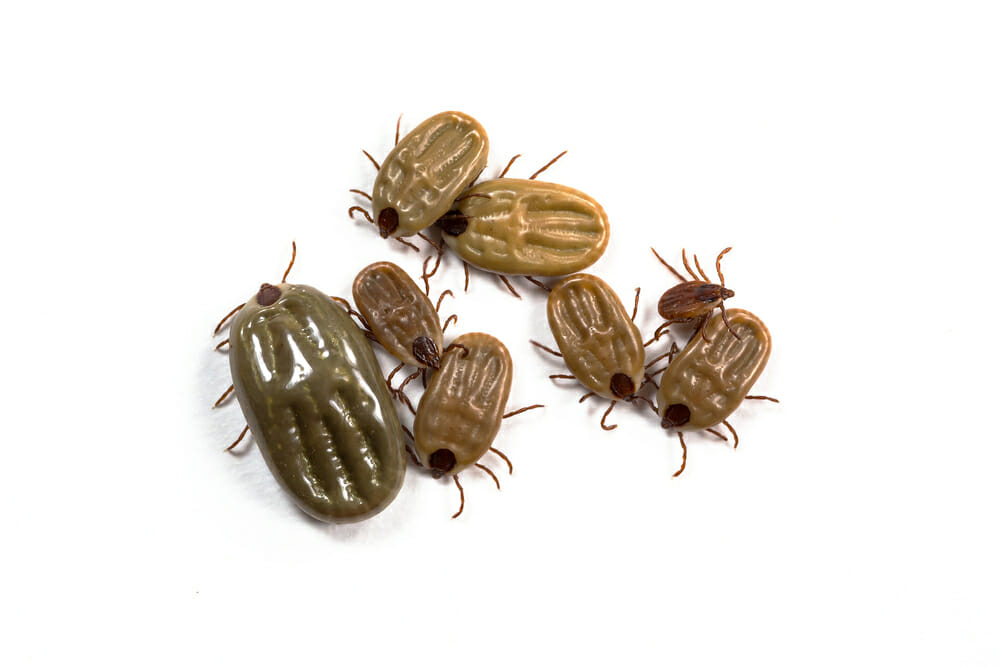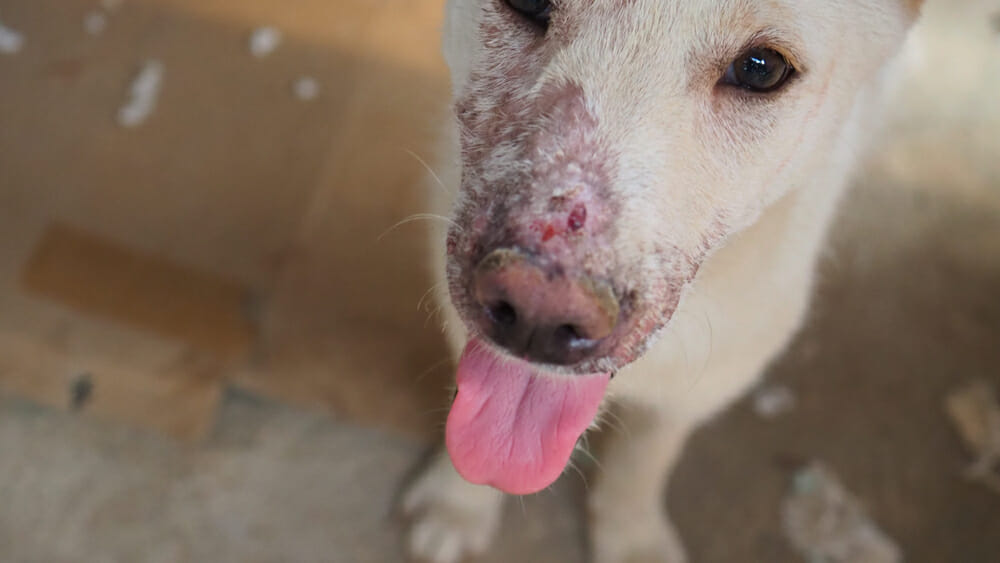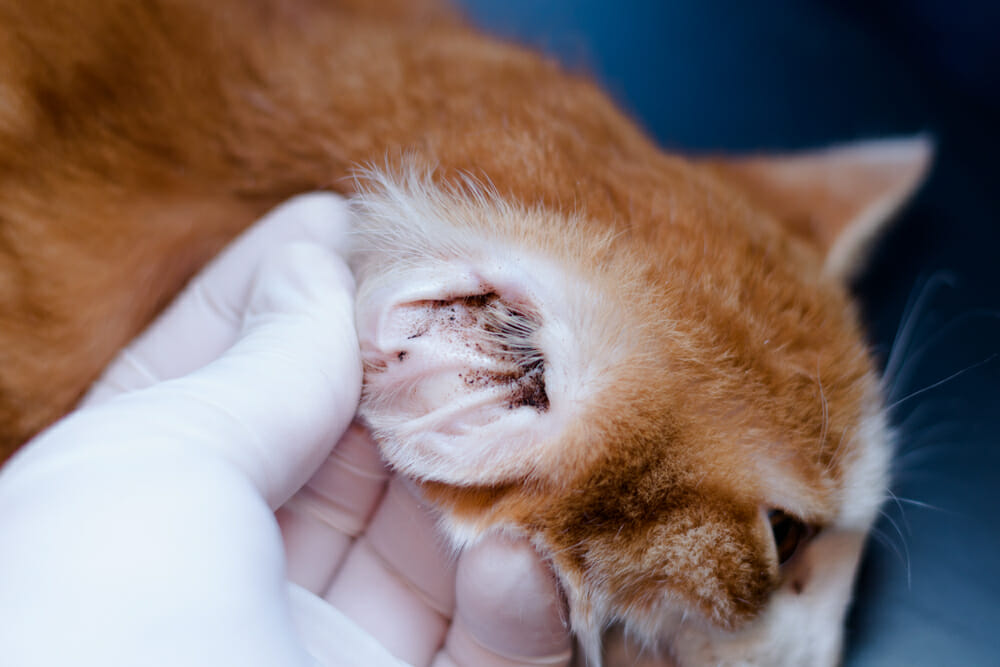Many types of parasites can live on (external) or in (internal) of your pet! The side effects of these parasites depend on the type of parasite and where the parasite is living on or in your pet! Here are just some examples of the common external ones we see:
Fleas
Adult fleas comprise only 5% of the flea population. The rest of the flea population is in the immature form that can live and mature in your home environment. Fleas are dark brown flat-bodied wingless insects that can jump great distances. Fleas survive on blood meals from biting your pet, but will also bite humans too. If your pet has fleas, you might see your pet is itching, scratching, biting and chewing at themselves. You may also see fleas or flea dirt (flea feces) on the skin. Pets can be treated with medication, and house environment can be cleaned.

Ticks
Ticks are small parasites that are usually found in low-lying brush or wooded areas. Pets are usually infected by walking through these areas and brushing up against the tick. Once on the animal, the tick will bury or embed its head in your pets’ skin and feed on blood. It then slowly becomes engorged with blood and enlarges in size and some change colour. Ticks can be hard or soft-shelled, but all are visible to the naked eye on our pets you may have to look closely for some types. Be sure to check your pets when returning from walks in areas where ticks are lurking by running your hand over their skin. Sites most commonly affected on our pets is where grooming is difficult: head, neck legs, armpits and between the toes. Removal is important as ticks can transfer disease to animals and humans including Lyme disease, Ehrlichiosis and Rocky Mountain Spotted Fever. There are medications that you can get from your veterinarian to prevent ticks. Combing and feeling your dog for ticks and removing them is best if you see a tick on your pet.

Mange
Mange is a skin disease that is characterized by severe itching, hair loss, scaling and sometimes scabbing of the affected skin. Lesions are typically found on the face, ears, and abdomen, but can spread to other areas as well. There are two types of mites that are common; they are called Sarcoptes and Demodex. Most cases occur in young pets but can also occur in adults. Mange is seen in the coyote population, especially in the spring, but can be seen all year round. Mange is also transferable to humans, so if your pet is itchy, be sure to get it checked out right away. Your veterinarian can easily diagnosis mange with a skin scraping and treat the parasite and skin.

Ear Mites
Ear mites are tiny little creatures rather like spiders. They have eight legs and live on or just under the surface of the skin, and are irritating insects that cause intense itching. The two species of mites that cause ear infections are Otodectes and Notoedres. Often ear mites are mistaken for ear infections or vice versa by owners. An ear mite infestation looks like coffee grounds (mite feces) in the pet’s ears. Easily diagnosed with cytology and pet treated with medication.

Please contact your veterinarian for the prevention and treatment of any of these common external parasites.
Written by: Tanya Cajina, RVT




